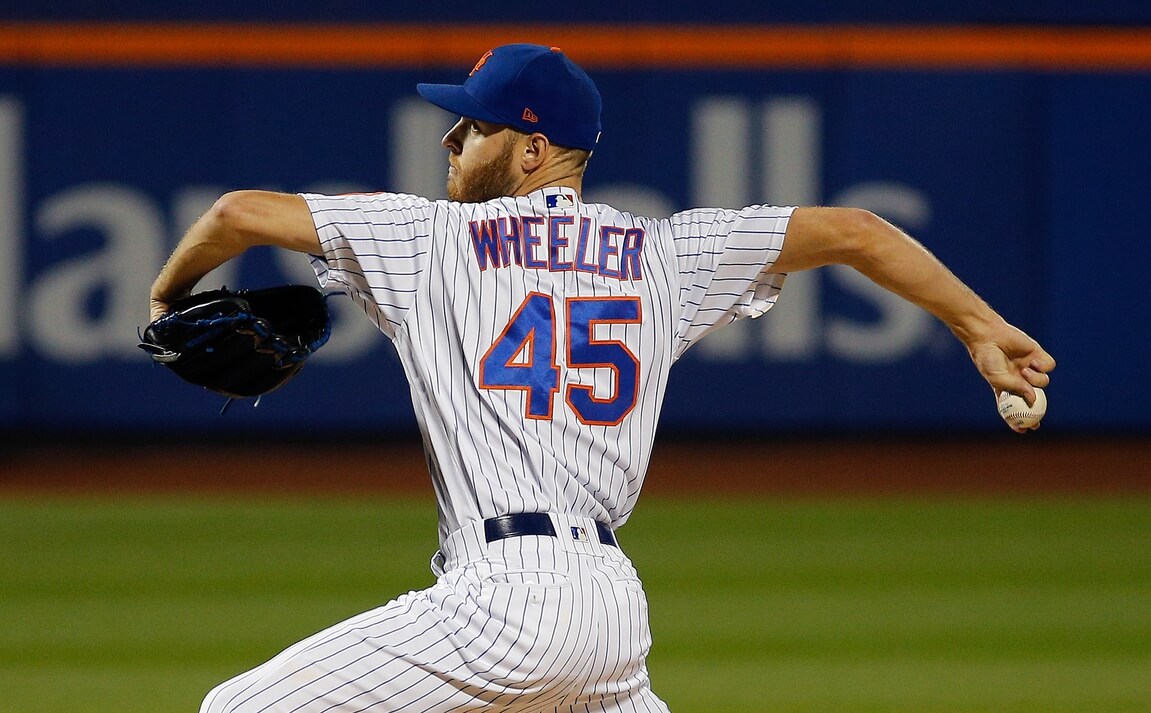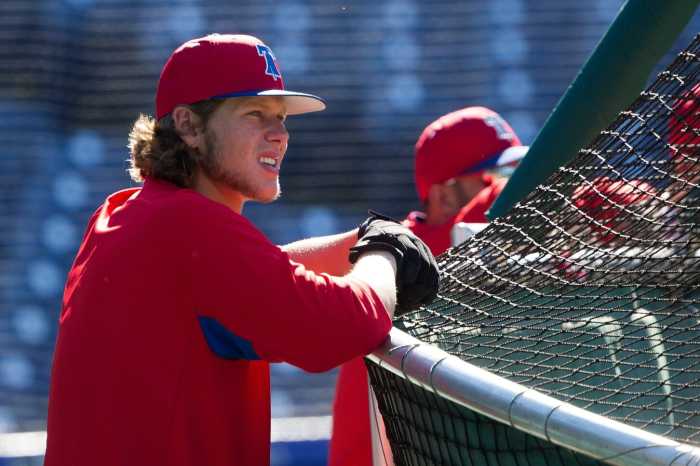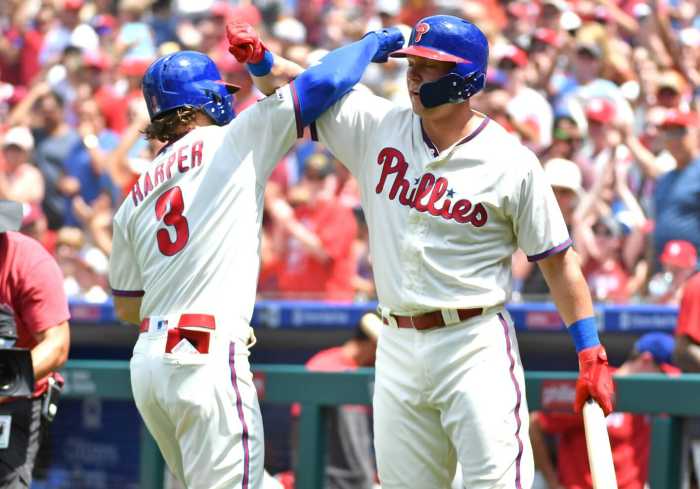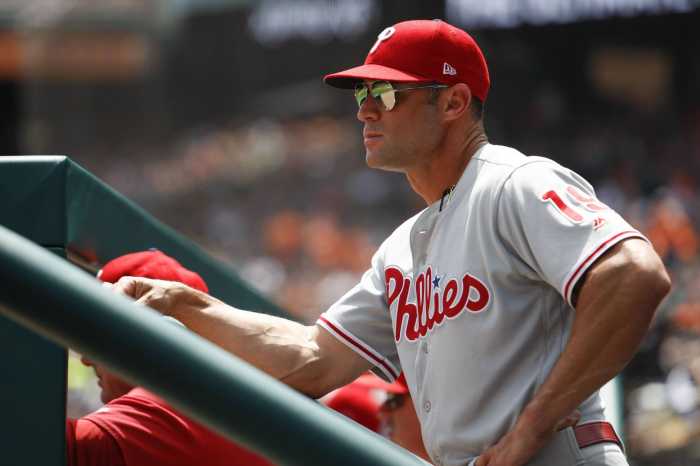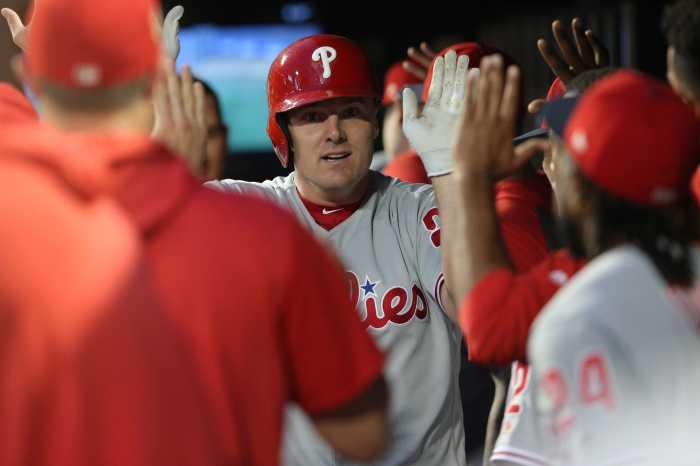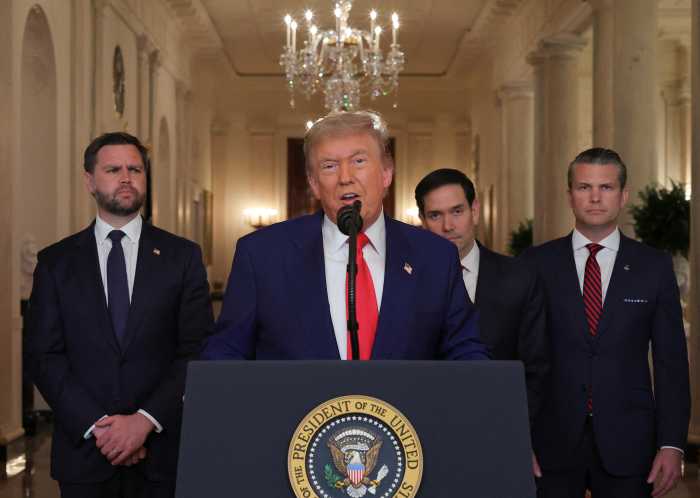When the Phillies inked starting pitcher Zack Wheeler to a 5-year, $118M pact, it quickly became apparent that they envisioned him as a front-end starter- a tall order for the young hurler that has never amassed more than 12 wins in a single season. Not only is Wheeler not known for racking up a ton of wins, but he has also never pitched 200 or more innings in a single season.
The Phillies’ confidence in his prospects as an upper-echelon starter isn’t entirely baseless, however, as Wheeler possesses some of the nastiest stuff around.
“I think everyone recognizes the talents that Zack Wheeler has, all 30 clubs,” said Phillies skipper Joe Girardi shortly after news broke of the Wheeler acquisition. “He’s a power pitcher with outstanding breaking stuff.”
Girardi’s scouting report rings true, as Wheeler has proven to be a power pitcher indeed over the course of his career. The hard-throwing righty has the ability to decimate batters with his incredible fastball, which has an average velocity of 96.33 MPH- fourth-highest in all of baseball- and can get it in at over 100 MPH when he really has it rolling.
What’s most impressive about his fastball offering is just how effortlessly he blows it by opposing hitters. Watch how gracefully he paints the inside corner of the plate with this 99 MPH heater.
The same low-effort mechanics help him breeze by his new teammate Bryce Harper here as well.
In addition to his overpowering heater, he also possesses a nasty slider- that ranked as the second-fastest slider amongst starters last season, according to FanGraphs- that has a lot of bite to it. Enough bite, in fact, to flat-out crumple generational talent Juan Soto at the plate.
His slider is probably his most effective pitch aside from his fastball, but he also has a reliable curveball, changeup, and two-seamer in his arsenal as well.
How reliable are his secondary offerings you ask? See for yourself.
As you can see, Wheeler has some straight-up FILTH to his game- a large part of why the Phillies were so comfortable making such a big financial commitment to him. As exciting and tantalizing as his pitching arsenal is, though, it kind of makes you wonder why the former first-rounder hasn’t achieved much success at the big-league level.
Sure, Wheeler has been fairly effective through five years in the majors, but pitchers who throw the type of stuff he does are usually dominating every fifth day on the bump, not just mildly successful. Which again begs the question, why isn’t Wheeler putting up Cy Young or even All-Star numbers?
Obviously, there are a ton of factors that go into stringing together successful starts, but for Wheeler, the primary issue stems from questionable decision-making on the mound. More specifically, over-relying on his fastball and poor pitch location when it counts.
Last season, when ahead 0-2 in the count, pitchers threw a fastball just 46.5% of the time, according to FanGraphs. The low rate of two-strike fastballs isn’t all that surprising considering they are the easiest type of pitch for batters to track and get contact on. New Phillies starter Zack Wheeler didn’t seem to get the memo, however, throwing a fastball 55.9% of the time he had a batter backed into a wall with two strikes.
While I understand resorting to your best pitch to try and put batters away, there is really no reason for Wheeler to be SO reliant on his fastball, especially when his secondary pitches have the wicked movement that they do. Not only that, but his over-reliance on his heater may be what is preventing him from evolving into the Cy Young contender he is capable of being.
We’ve already seen this evolution template a few times, most notably with Gerrit Cole, who was on the receiving end of the richest contract of any pitcher in history earlier this offseason. Before Cole was the perennial Cy Young contender that struck out every batter in sight, his performance was strikingly similar to that of Wheeler. Take a look at his 2017 numbers- his last year in Pittsburgh before revamping his game in Houston- in comparison to Wheeler’s 2019 figures.
2017 Gerrit Cole K%: 23.1 BB%: 6.5
2019 Zack Wheeler K%: 23.6 BB%: 6.0
After arriving in Houston, Cole altered the use of his pitches, virtually dropping his ineffective sinker altogether. His biggest change, and the tactic I’m hoping Wheeler implements, was climbing the ladder with his fastball in two-strike situations. Take a look at the two-strike, fastball placement of he and Wheeler throughout the 2019 season, via BrooksBaseball.net.
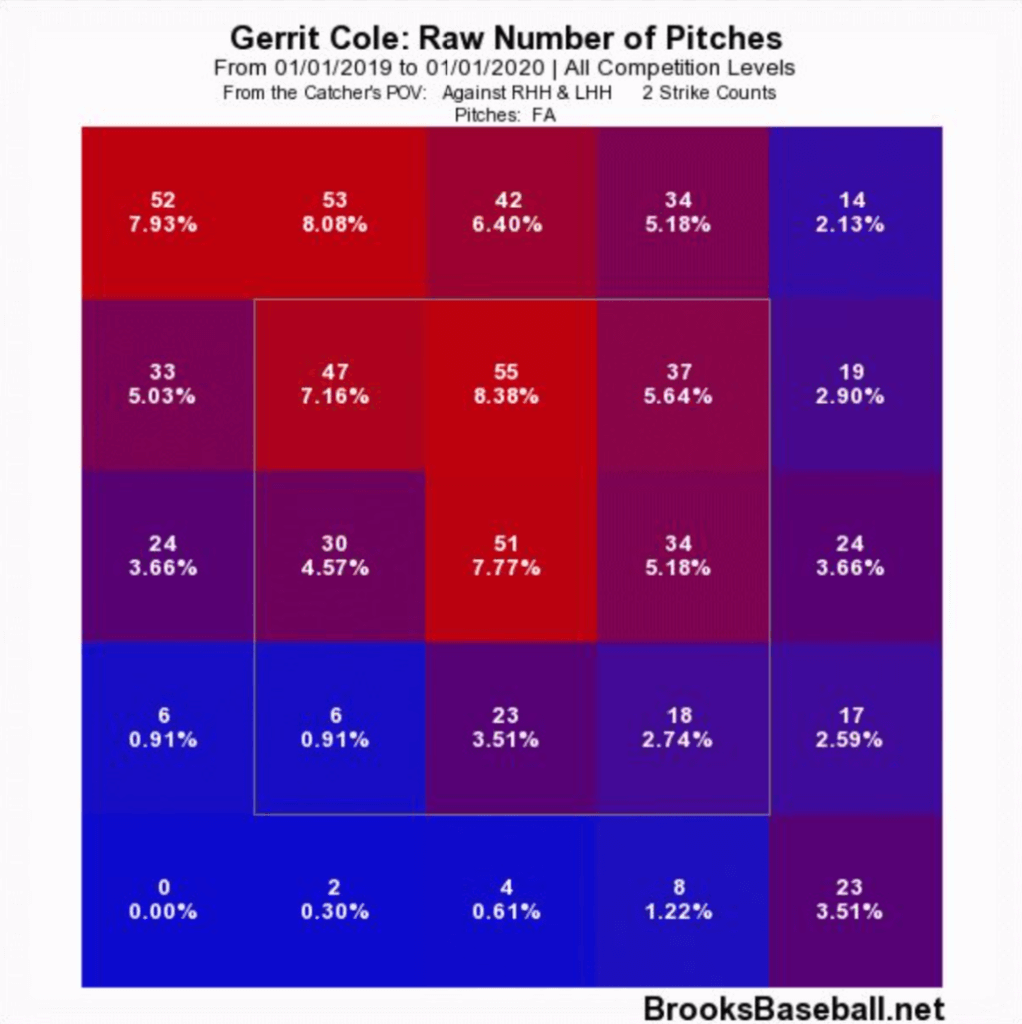
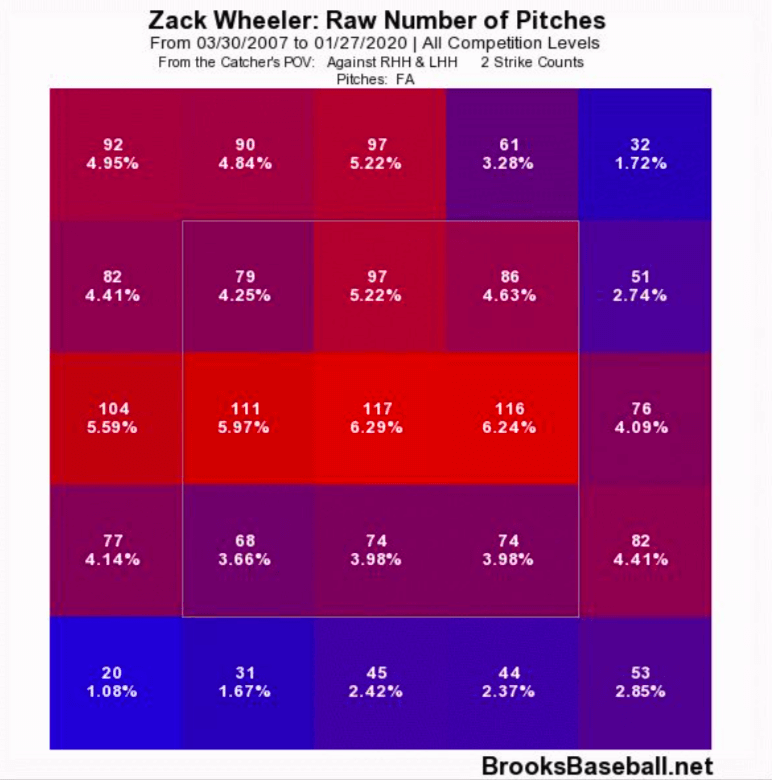
As you can see, Cole challenges batters up in the zone with his fastball at a much higher clip than Wheeler, resulting in far more strikeouts. As for Wheeler, not only is he not challenging batters up in the zone- where he should be with his ferocious fastball- but he is leaving far too many pitches out over the heart of the plate in these situations. After doing an excellent job of putting himself in an advantageous, two-strike position, Wheeler is practically undoing all his good by throwing his fastball too frequently and in poor locations.
To Wheeler’s credit, it’s not as if his pitch location has zero advantages. Conversely, pounding the mid-to-lower part of the plate induced lots of weak contact. Weak contact is fine, more or less, but still puts the pitcher and team at risk of a negative result once the ball is in play. Hopefully, under the tutelage of freshly-minted Phillies pitching coach Bryan Price, Wheeler will begin to climb the ladder or mix in his secondary pitches more in two-strike counts- trading weak contact for the more valuable strikeout.
Already a productive, reliable starting pitcher, Wheeler may be a strategic change away from evolving into a feared ace in Philly. Even if he doesn’t become a bonafide ace, he will likely perform admirably enough to justify his contract. A simple tweak in his philosophy on the mound, however, could see him greatly outperform his lofty pact and finally give Aaron Nola and the Phils the beta dog they desperately need.
Mandatory Credit: Andy Marlin-USA TODAY Sports

